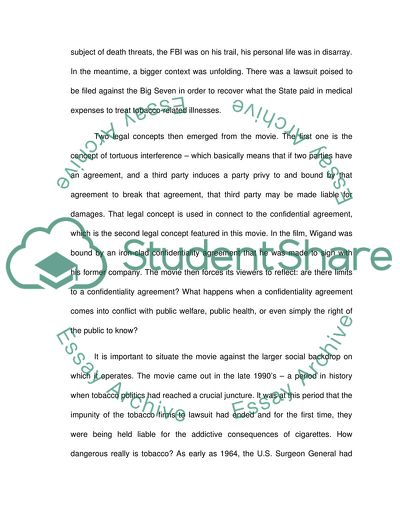Cite this document
(Tobacco Politics and the Film the Insider Movie Review, n.d.)
Tobacco Politics and the Film the Insider Movie Review. https://studentshare.org/law/1755333-corporate-coverup-confidentiality-agreements-tortious-interference-and-coverups-the-insider-as-a-perspective
Tobacco Politics and the Film the Insider Movie Review. https://studentshare.org/law/1755333-corporate-coverup-confidentiality-agreements-tortious-interference-and-coverups-the-insider-as-a-perspective
(Tobacco Politics and the Film the Insider Movie Review)
Tobacco Politics and the Film the Insider Movie Review. https://studentshare.org/law/1755333-corporate-coverup-confidentiality-agreements-tortious-interference-and-coverups-the-insider-as-a-perspective.
Tobacco Politics and the Film the Insider Movie Review. https://studentshare.org/law/1755333-corporate-coverup-confidentiality-agreements-tortious-interference-and-coverups-the-insider-as-a-perspective.
“Tobacco Politics and the Film the Insider Movie Review”. https://studentshare.org/law/1755333-corporate-coverup-confidentiality-agreements-tortious-interference-and-coverups-the-insider-as-a-perspective.


